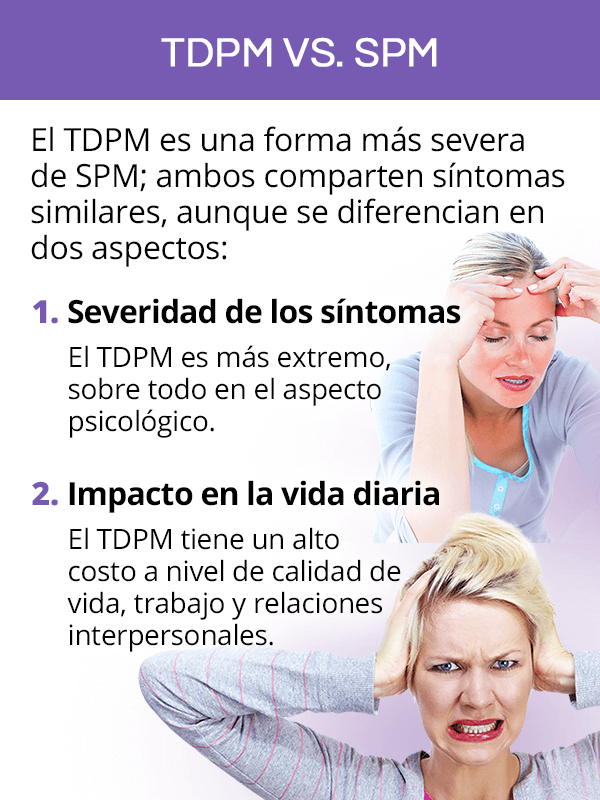
Trastorno Disfórico Premenstrual (TDPM) SheCares
El trastorno disfórico premenstrual (TDPM) es una forma mucho más severa del síndrome premenstrual (SPM). No se conoce la causa exacta del TDPM. Los síntomas principales que diferencian al TDPM de otros trastornos del estado de ánimo o afecciones menstruales es cuándo comienzan los síntomas y cuánto duran. Los síntomas del TDPM son tan.

🩸Trastorno disfórico premenstrual (TDPM) Diagnóstico y TRATAMIENTO integrativo Dra. Pilar
Premenstrual dysphoric disorder ( PMDD) is a mood disorder characterized by emotional, cognitive, and physical symptoms. PMDD causes significant distress or impairment in menstruating women during the luteal phase of the menstrual cycle.

Trastorno Disfórico Premenstrual Qué Es, Síntomas Y Tratamiento 88.9FM RDSRadio
PMS (premenstrual syndrome) is the name for the symptoms women can experience in the weeks before their period. Most women have PMS at some point. You can get help if it affects your daily life. Symptoms of PMS. Each woman's symptoms are different and can vary from month to month. The most common symptoms of PMS include: mood swings

Trastorno Disfórico Premenstrual (TDPM) SheCares
Diagnosis. About 80% of women report at least mild premenstrual symptoms, 20%-50% report moderate-to-severe premenstrual symptoms, and about 5% report severe symptoms for several days with impairment of functioning. 1 The 5% of women with the severest premenstrual symptoms and impairment of social and role functioning often meet the diagnostic criteria for premenstrual dysphoric disorder (PMDD).

Trastorno disfórico premenstrual
Premenstrual dysphoric disorder, which affects 2%-5% of premenopausal women, was included in Appendix B of DSM-IV, "Criterion Sets and Axes Provided for Further Study."

TRASTORNO DISFÓRICO PREMENSTRUAL qué es, síntomas, causas y tratamiento
Premenstrual dysphoric disorder (PMDD) is a condition in which a woman has severe depression symptoms, irritability, and tension before menstruation. The symptoms of PMDD are more severe than those seen with premenstrual syndrome (PMS).

Trastorno disfórico premenstrual y sus graves consecuencias
The symptoms of PMS and PMDD are: Sadness and crying. Feeling nervous or anxious. Anger or irritability. Strong cravings for certain foods. Problems paying attention and concentrating. Fatigue. Physical problems such as breast tenderness, headaches, joint or muscle pain, and swelling or bloating. Trouble sleeping.
:max_bytes(150000):strip_icc()/pmdd-causes-4122124_FINAL-311cfbec69c94855a5521d071941baaf.png)
Causas y factores de riesgo del trastorno disfórico premenstrual (TDPM) Medicina Básica
In fact, and in accordance with current calculations, premenstrual dysphoric disorder is suffered by between 3% and 10% of the population; in the study done by Aperribai, by contrast, it has been found to affect 15%. The author has explained that this difference is "normal because it concerns test screening.
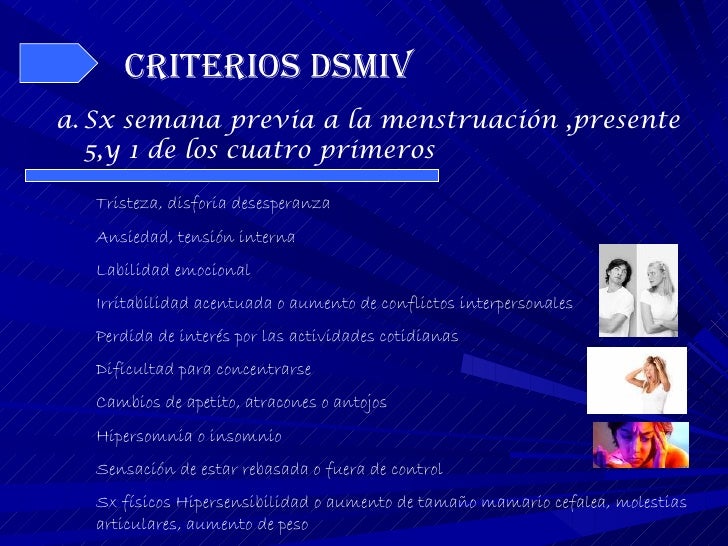
Trastorno disfórico premenstrual
Premenstrual disorders consist of psychiatric or somatic symptoms that develop within the luteal phase of the menstrual cycle, affect the patient's normal daily functioning, and resolve shortly.

SÍNDROME PREMENSTRUAL TRASTORNO DISFÓRICO PREMENSTRUAL Diagnóstico, síntomas, causas y
Premenstrual syndrome (PMS) and premenstrual dysphoric disorder (PMDD) are common disorders of the luteal phase of the menstrual cycle and are characterized by moderate to severe physical, affective, or behavioral symptoms that impair daily activities and quality of life.
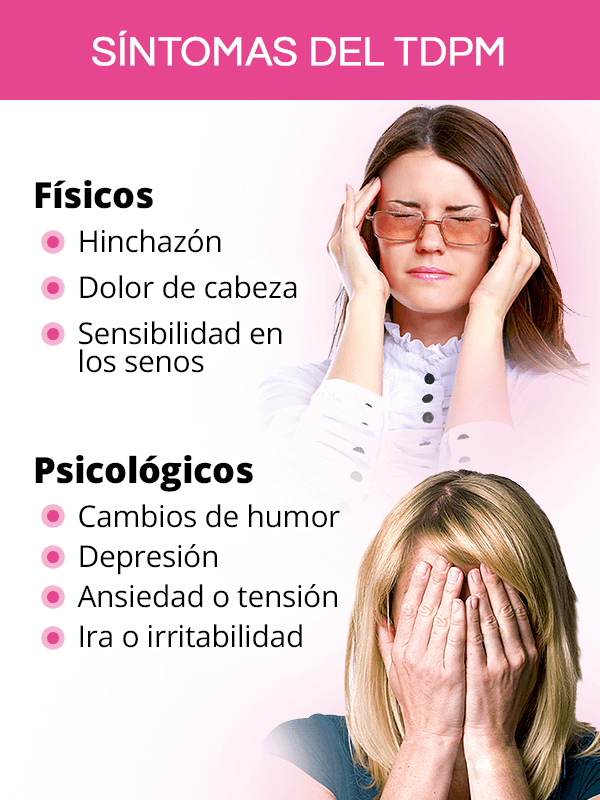
Trastorno Disfórico Premenstrual (TDPM) SheCares
Methods: The Premenstrual Dysphoric Disorder Questionnaire for DSM-5 (Cuestionario del Trastorno Disfórico Premenstrual - DSM-5), a 25-item questionnaire to assess PMDD was developed and.
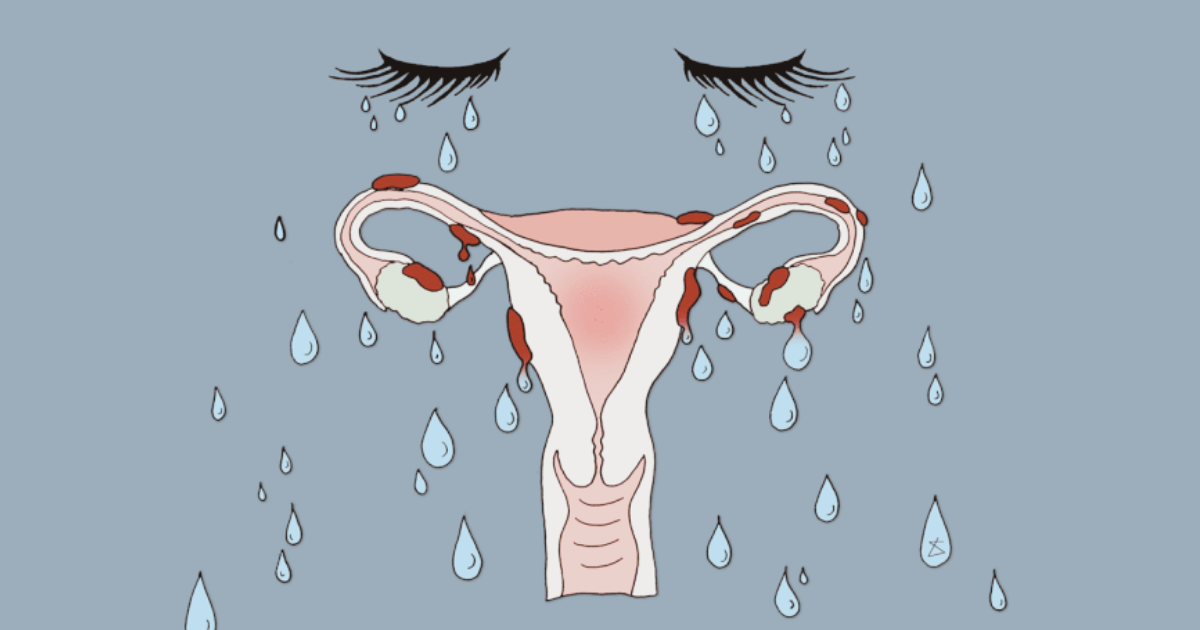
Premenstrual Dysphoric Disorder (PMDD) Symptoms and How Hormonal Birth Control Can Help Siena
The Premenstrual Dysphoric Disorder Questionnaire for DSM-5 (Cuestionario del Trastorno Disfórico Premenstrual - DSM-5), a 25-item questionnaire to assess PMDD was developed and completed in Spanish by 2820 women (Age M=23.43; SD=7.87).

Trastorno disfórico menstrual ¿qué es y cómo reconocerlo? Tucuman24
A screening instrument for diagnosing premenstrual dysphoric disorder is proposed. • The instrument has been developed by using the seven diagnosing criteria of DSM-5. • Its two dimensions, Dysphoria and Apathy, have good internal consistency. • The instrument has shown acceptable reliability and validity. Abstract Methods Conclusion Keywords

TRASTORNO DISFÓRICO PREMENSTRUAL (TDPM) Instituto PsicologíaSexología Mallorca
Trastorno disfórico premenstrual ¿Qué es el trastorno disfórico premenstrual? El trastorno disfórico premenstrual es una forma mucho más grave del síndrome premenstrual. Puede afectar a mujeres en edad fértil. Es una afección de salud grave y crónica que requiere atención y tratamiento.

Trastorno disfórico premestrual causas, diagnóstico y tratamiento mediQuo
El síndrome premenstrual (SPM - PMS por sus siglas en inglés) es una enfermedad médica que afecta a algunas mujeres de edad fértil. Más de una de cada tres mujeres sufre de SPM, y una de cada 20 sufre tan severamente que sus vidas se ven seriamente afectadas. El SPM está relacionado con una variedad de síntomas físicos o psicológicos.
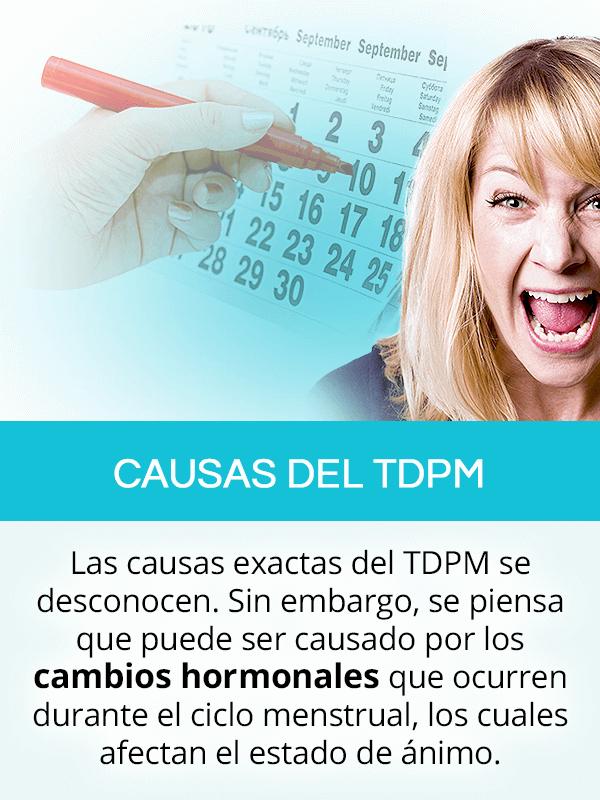
Trastorno Disfórico Premenstrual (TDPM) SheCares
Premenstrual symptoms include a constellation of mood, behavioral, and physical indications that occur in a cyclic pattern prior to menstruation and then wane off after the menstrual period in women of reproductive age.